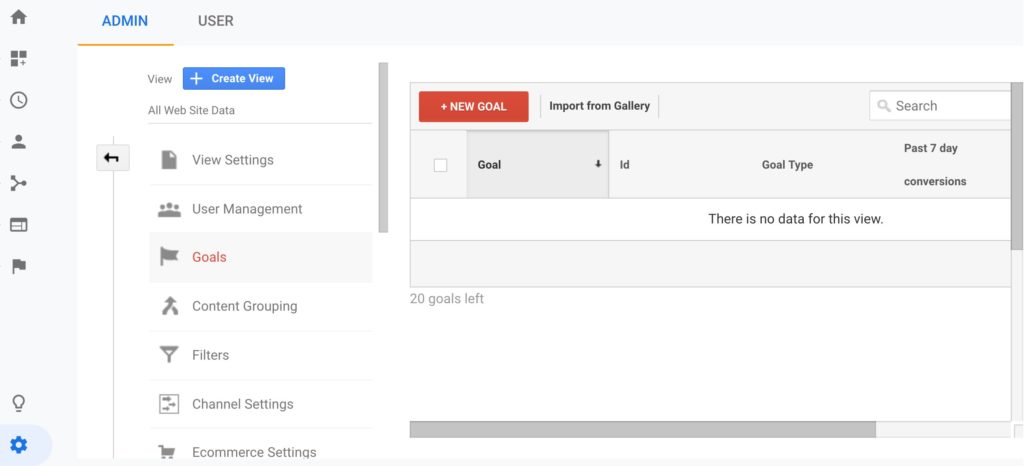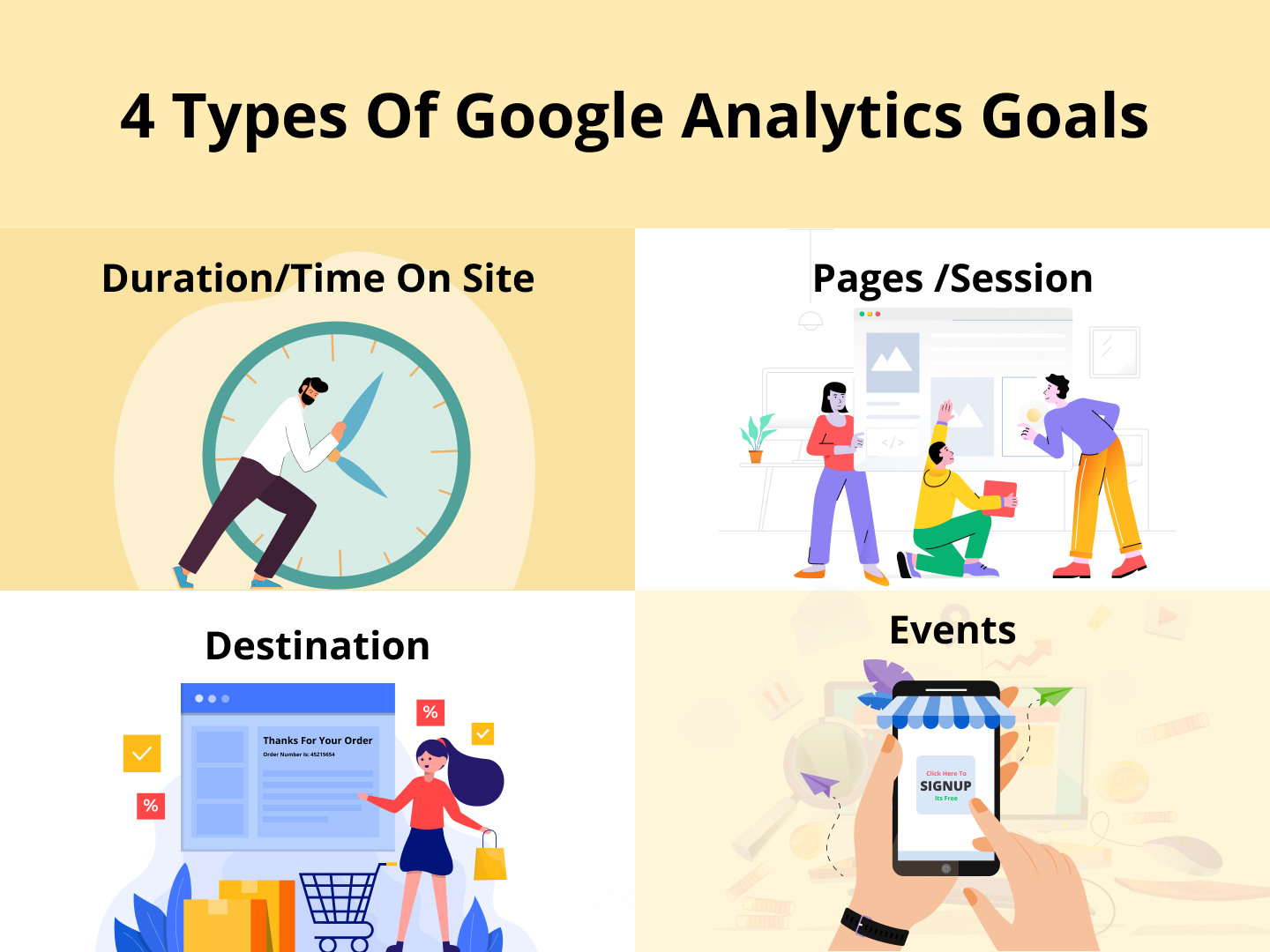Discover the Limitations of Google Analytics Goals: Introducing the Information Types That Remain Untrackable
As companies significantly depend on data-driven decision-making, recognizing the restrictions of devices like Google Analytics comes to be critical. While Google Analytics Goals deal useful understandings into customer communications, there exist data types that avoid tracking, posing obstacles to a comprehensive understanding of user actions.
Insufficient Individual Trip Tracking
Incomplete individual trip tracking within Google Analytics can prevent the capacity to precisely evaluate user habits. When the individual trip is not completely tracked, there are gaps in the data that stop a thorough understanding of how individuals connect with a web site. This lack of insight can result in missed chances for optimization and renovations to the user experience.
One common concern with insufficient customer trip monitoring is the failure to see the complete path that customers take previously completing an objective or leaving the site. Without this details, it is challenging to identify where users may be running into barriers or friction factors that avoid them from transforming. In addition, insufficient monitoring can obscure the influence of certain marketing initiatives or web site modifications on individual behavior.
To resolve this constraint, it is crucial to establish up appropriate tracking devices within Google Analytics to catch the whole customer journey. This may include establishing event tracking, objective funnels, or using devices like Google Tag Supervisor to guarantee that no vital communications go unrecorded. By gaining a comprehensive sight of the user trip, site owners can make even more informed decisions to improve user involvement and drive conversions.
Acknowledgment Challenges
Browsing via acknowledgment challenges in Google Analytics requires an extensive understanding of exactly how various touchpoints add to the total conversion process. Acknowledgment challenges emerge from the intricacy of contemporary customer journeys, where individuals interact with multiple channels before transforming.
One common attribution challenge is the problem in attributing conversions to the right source, especially in cases where customers communicate with several channels prior to converting. This can cause errors in figuring out which advertising efforts are driving the most conversions. Additionally, cross-device tracking presents an additional attribution challenge, as customers usually switch in between tools throughout their trip, making it testing to track their interactions flawlessly. Marketing professionals should very carefully translate and analyze acknowledgment data to make enlightened decisions and maximize their advertising and marketing techniques efficiently.
Offline Conversions
Provided the difficulties connected with associating conversions properly in online networks, the dimension of offline conversions offers a considerable chance for online marketers looking for a more detailed understanding of their customers' journey. Offline conversions describe activities that customers take in the real world, such as making purchases in brick-and-mortar shops or over the phone, attending occasions, or engaging with printed products - what data is google analytics goals unable to track. These conversions are important for organizations that run both online and offline, as they supply useful insights right into the performance of advertising projects across various touchpoints
Tracking offline conversions typically postured a considerable difficulty for marketing experts, as it was testing to link these actions back to specific online communications properly. With improvements in innovation, such as the assimilation of CRM systems, distinct identifiers, and promo code codes, companies can currently link the void between online and offline data to gain a more all natural view of client habits. By effectively gauging offline conversions, marketers can maximize their strategies, allot sources a lot more successfully, and eventually improve the total customer experience.
Cross-Device Monitoring
Cross-device monitoring plays a vital function in understanding the interconnected nature of consumers' electronic interactions throughout multiple devices. In today's omnichannel world, where individuals perfectly investigate this site change between desktop computers, smart devices, and tablets, tracking their actions throughout these gadgets is vital for marketers to acquire an extensive sight of their consumer trip.

Furthermore, personal privacy concerns and laws such as GDPR and CCPA have further challenging cross-device monitoring. With individuals demanding even more control over their information and enhanced constraints on monitoring technologies, marketers need to discover ingenious and privacy-compliant methods to connect customer communications throughout tools.
Dynamic Material Involvement
Understanding customer engagement with vibrant content is pivotal in maximizing electronic advertising and marketing strategies for boosted target market communication. Dynamic material describes site aspects that transform based on customer behavior, choices, or other aspects, supplying a personalized experience. Tracking user communications with dynamic material poses obstacles for traditional analytics devices like Google Analytics.
While Google Analytics can track fundamental interactions like clicks and web page sights, it might have a hard time to capture even more nuanced engagements within vibrant material. what data is google analytics goals unable to track. Metrics such as time spent on certain dynamic aspects, hover activities, or communications within pop-ups are usually not easily quantifiable utilizing conventional monitoring methods. This constraint prevents marketers' capacity to completely comprehend exactly how customers are involving with vibrant web content and tailor their approaches accordingly

Final Thought
Finally, Google Analytics objectives have limitations in tracking incomplete user trips, connecting conversions precisely, capturing offline conversions, tracking cross-device communications, and determining vibrant content interaction. These restrictions highlight the significance of discovering added monitoring approaches and tools to acquire an extra detailed understanding of customer habits and conversions past what Google Analytics can offer.
While Google Analytics Goals offer important understandings right into individual interactions, there exist information kinds that elude tracking, positioning difficulties to a comprehensive understanding of individual behavior.Incomplete customer journey tracking within Google Analytics can prevent the capability to properly analyze customer habits. When the individual journey is not totally tracked, there are voids in the data that protect against an extensive understanding of exactly how customers connect with an internet site.One common concern with incomplete individual journey monitoring is the inability to see the full course that individuals take before finishing an objective or leaving the website. By getting a detailed view of the user journey, site owners can make more informed decisions to enhance individual involvement and drive conversions.